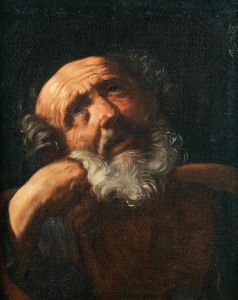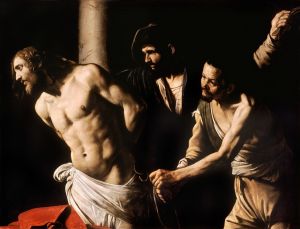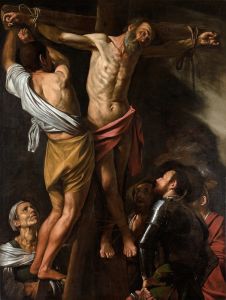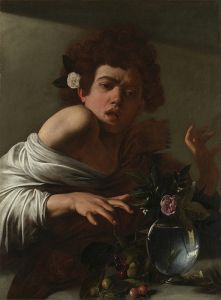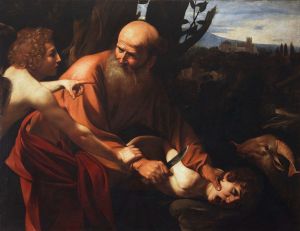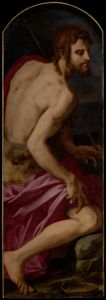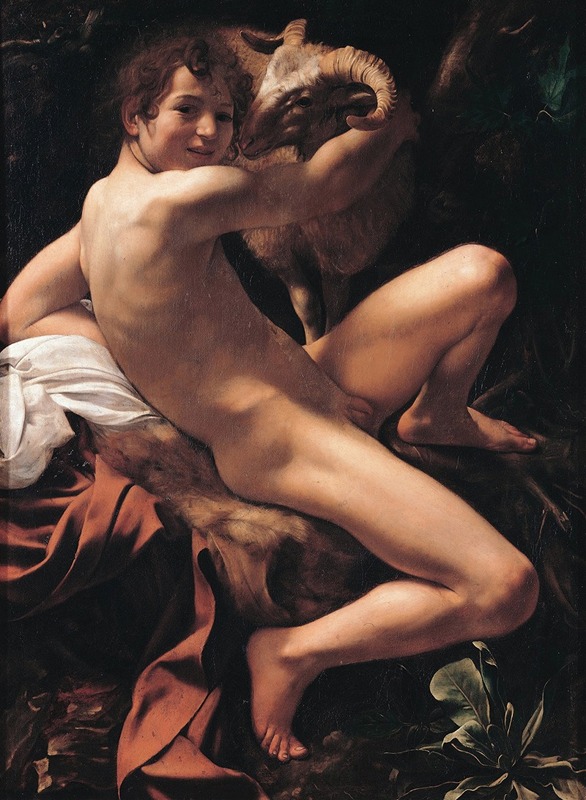
Saint John the Baptist
A hand-painted replica of Caravaggio’s masterpiece Saint John the Baptist, meticulously crafted by professional artists to capture the true essence of the original. Each piece is created with museum-quality canvas and rare mineral pigments, carefully painted by experienced artists with delicate brushstrokes and rich, layered colors to perfectly recreate the texture of the original artwork. Unlike machine-printed reproductions, this hand-painted version brings the painting to life, infused with the artist’s emotions and skill in every stroke. Whether for personal collection or home decoration, it instantly elevates the artistic atmosphere of any space.
Saint John the Baptist by Caravaggio
Saint John the Baptist is a painting by the Italian Baroque master Michelangelo Merisi da Caravaggio. The artwork depicts John the Baptist, a prominent figure in Christian theology, and is one of several works by Caravaggio on this subject. This particular painting is believed to have been created around 1604 and is housed in the Galleria Borghese in Rome, Italy.
The painting portrays John the Baptist as a youthful figure, seated in a contemplative pose. He is depicted wearing a simple red drapery, which partially covers his body, and holding a staff, a traditional symbol associated with his role as a prophet. A lamb, symbolizing Christ as the "Lamb of God," is present in the composition, reinforcing the connection between John the Baptist and the foretelling of Jesus' mission. The background is dark and undefined, a hallmark of Caravaggio's use of chiaroscuro, which emphasizes the dramatic contrast between light and shadow.
Caravaggio's interpretation of John the Baptist departs from traditional depictions of the saint. Rather than presenting him as an older, ascetic figure, Caravaggio portrays him as a youthful and almost vulnerable individual. This approach aligns with Caravaggio's broader artistic style, which often emphasized realism and human emotion over idealized representations.
The painting was commissioned by Cardinal Scipione Borghese, a prominent patron of the arts and an early supporter of Caravaggio. It remains part of the Borghese collection, which includes several other works by the artist.
Caravaggio's Saint John the Baptist is notable for its psychological depth and naturalistic approach, characteristics that have made his works influential in the development of Baroque art. The painting reflects the artist's ability to convey complex emotions and spiritual themes through a combination of dramatic lighting, realistic detail, and innovative composition.
This work is one of many representations of John the Baptist by Caravaggio, who returned to the subject multiple times throughout his career. Each version offers a unique interpretation, reflecting the artist's evolving style and approach to religious themes.
The painting remains an important example of Caravaggio's contribution to the Baroque movement and continues to be studied and admired for its artistic and historical significance.








